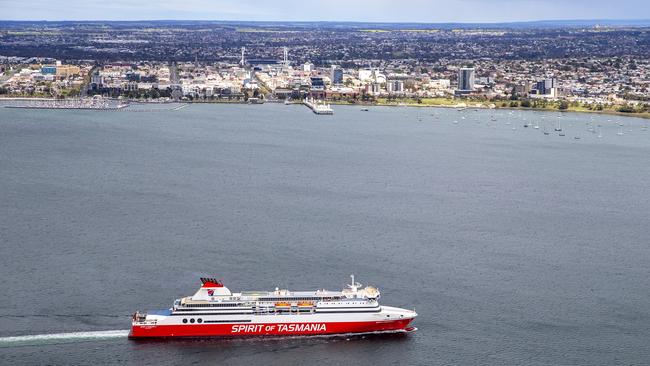Regionals to play a key role in recovery
As we respond to the challenges of climate change and the recovery of the Australian economy, ports will need to play an important leadership role in shaping and transforming Australia’s supply chains.

As we respond to the challenges of climate change and the recovery of the Australian economy, ports will need to play an important leadership role in shaping and transforming Australia’s supply chains.
With more than 98 per cent of Australia’s trade passing through ports, according to Ports Australia, now is the time for us to play a key role in driving transformative change. We need to work collaboratively with our local communities, governments and businesses to respond creatively and innovatively to the ever-increasing risks we are facing around the globe, including the impacts of climate change and the uncertainty of the pandemic.
To succeed in this, we need to be adaptive and responsive to the ever-changing needs of businesses nationally and internationally and in meeting the needs of consumers now and into the future.
As a sector, we play a lead role in guaranteeing the long-term sustainability and resilience of the port itself and the many businesses, communities and individuals that rely on us so heavily.
The 2021 IPCC Sixth Assessment Report found that human influence has warmed the atmosphere and that human-induced climate change is affecting many weather and climate extremes in every region across the globe.

Governments are responding to these challenges, including the Victorian government that has developed a Climate Change Strategy and target of net zero emissions by 2050 and the Federal government through their Climate Solutions Package.
These challenges require the need for ports to invest in integrated port assets and services that will deliver significant value over the long-term, diversifying into emerging markets such as clean energy while investing in data and technology to enable more efficient and resilient port operations.
The current Covid-19 pandemic has undoubtedly tested our resilience and sustainability.
As chief executive of GeelongPort, I am incredibly proud of how we have responded to the uncertainty of our operating environment.
We have established critical controls to ensure continued operations while partnering with our customers to invest in major projects that will result in business growth and support the long-term sustainability and prosperity of Victoria.
We have seen Australia’s regions grow during the pandemic, with 244,000 people leaving our capital cities and moving to regional areas in the year to March 2021 (according to regional population data from the Australian Bureau of Statistics).
Through significant investments in major infrastructure projects, governments will need to set the environment for new jobs in these regional areas.
GeelongPort is already investing in the future resilience of the port and the G21 region, helping support tourism growth and development and continuing to drive trade for the many businesses that rely so heavily on us, including those in the agriculture, construction and energy sectors.
In a great boost for many tourism businesses who have been deeply impacted by ongoing travel restrictions, GeelongPort will be welcoming the Spirit of Tasmania to Geelong in 2022.
The long-term deal will support and grow the Geelong region and Victoria. It will boost trade and investment opportunities in the tourism, hospitality, agribusiness, manufacturing and logistics industries, providing many additional direct and indirect jobs and increasing tourism expenditure by $174.1m in Victoria by 2029-30.
In addition, we have established a long-term deal with Boral Cement, Australia’s largest building and construction materials supplier, who is moving their entire cement clinker and grinding facility to GeelongPort. The Geelong facility will increase Boral’s capacity to meet future Victorian infrastructure demand and allow for growth to support Victoria’s infrastructure, housing, and construction sector.
As Victoria’s premier bulk port and a major driver of Victoria’s economy, GeelongPort facilitates more than $7bn of trade annually.
The location of GeelongPort makes it of high strategic significance for Victoria, providing unfettered logistics routes for trade through critical road, rail, air and channel connections for Geelong and southwest Victoria’s supply chains.
Being central to these logistics routes, we have an important leadership role in moving beyond a logistics hub to an energy hub. We need to support governments and businesses in helping them transition to cleaner energy options as they respond to the global climate challenge.
GeelongPort is aspiring to become the most environmentally sustainable bulk port in Australia and is committed to undertaking our activities with care and respect for the environment. We were the first port in Australia to make the voluntary commitment to reduce our greenhouse gas emissions as part of the Science Based Targets initiative, setting a target consistent with reductions required to keep warming to 1.5C. This includes reducing our direct and indirect emissions by 50 per cent by 2030 and to monitor and reduce our indirect value chain emissions.
To help support Victoria’s transition to a low carbon economy, we are investing in critical port infrastructure and actively working with key businesses and stakeholders on important energy projects.
In what continues to be uncertain times for Australia, regional ports must be not only delivering on demand but looking at ways to diversify offerings to create opportunities that will bring economic prosperity to regional areas.
-
Brett Winter is chief executive of GeelongPort.


